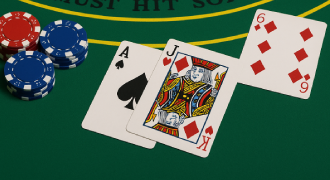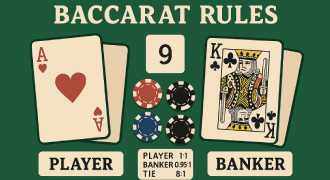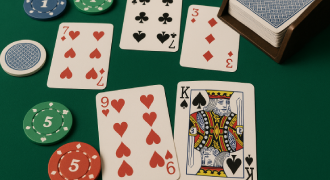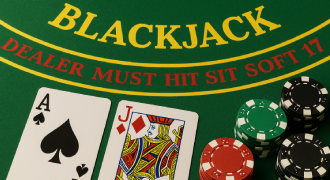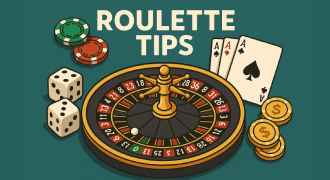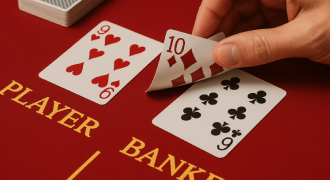Craps Odds Explained – RTP, Payouts & Bets
This fast-paced and exciting dice game is one where understanding the probabilities is crucial to making informed bets. Whether you're a beginner or an experienced player, knowing how Craps odds, RTP, and payouts work can significantly improve your strategy. This guide will explain the key concepts behind betting strategies, the house edge, and how to maximize your chances of winning by understanding the various probabilities at the table.
Explanation of the odds in Craps
This game is one of the most exciting table games in the casino, driven by dice rolls that lead to fast-paced decisions. Understanding Craps odds is the key to making better choices at the table, since each bet type comes with different levels of risk and potential reward. The way these probabilities are structured affects payouts, the house edge, and the long-term return-to-player (RTP) percentage.
Every bet in the game, whether on the pass line, come line, or field, is tied to mathematical probability. By analyzing dice combinations, players can estimate the likelihood of winning and compare that with what the casino pays out. Understanding the relationship between probabilities and payouts is crucial for both beginners learning the game and experienced players looking to refine their strategies.
How to Play Craps
The game starts with a come-out roll, where the shooter throws two dice. If the roll results in a 7 or 11, the pass line bet wins immediately. On the other hand, rolling a 2, 3, or 12 makes the pass line lose. Any other number becomes the point, and the shooter continues rolling until either the point is repeated or a 7 appears.
A Craps odds bet comes into play after a point is set, allowing players to back up their pass line wager with an additional bet that reflects the true odds without the house edge. This unique structure sets the game apart from most other table games, giving players a chance to compete on nearly even terms with the casino.
Learning how to manage bankroll, adjust bet sizes, and recognize the best opportunities is crucial. Many newcomers first stick with the basic pass line and field bets before experimenting with more complex options like placing numbers or laying bets.
Dice Probability and Combinations
The game is entirely based on dice rolls, with probability playing a central role in determining the outcome. With 36 possible results from two six-sided dice, the distribution of numbers explains why some outcomes are more frequent than others. For example, a total of 7 has six possible combinations, making it the most common result. In contrast, numbers like 2 and 12 each have only one combination, which makes them much rarer. Understanding these probabilities allows players to better interpret Craps odds and adjust their betting strategies accordingly.
Common vs Rare Dice Rolls
Frequent results, such as 6, 7, and 8, are often the focus of many seasoned players' strategies. These numbers appear more often due to the number of combinations available, and as a result, they form the foundation of low-risk, steady betting approaches. Conversely, totals like 2, 3, 11, and 12 are rarer and less predictable, making them more volatile. Wagers on these numbers tend to offer higher payouts, but the increased risk means they should be approached with caution.
This contrast between common and rare rolls creates a dynamic and exciting betting environment, where players must balance risk and reward. The Craps betting odds are set by the casino to reflect these differences in probability. While frequent numbers are associated with smaller payouts, they offer higher reliability, ensuring long-term profitability for the house. Meanwhile, bets on rare numbers can offer big wins, but the inherent risk of losing also makes them more lucrative for the casino.
Chances of Rolling 7, 11, 2, 3, 12
The probability of rolling specific totals is central to understanding Craps dice odds. Each combination has a set chance of occurring, and these figures are essential for any player trying to make informed betting decisions. Below is a breakdown of the probabilities for rolling key numbers in the game:
|
Dice Total |
Combinations |
Probability (%) |
|
7 |
6 |
16.67% |
|
11 |
2 |
5.56% |
|
2 |
1 |
2.78% |
|
3 |
2 |
5.56% |
|
12 |
1 |
2.78% |
The relatively high probability of rolling a 7 (16.67%) explains why Craps pass line odds often favor this outcome during the come-out roll. With 6 possible combinations, 7 is statistically more likely to appear than any other total. In contrast, rolling a 2 or 12 (each with just 1 combination) is much less likely, which is why they come with higher payouts but also increase the likelihood of losing. Understanding these figures is key to identifying safer bets and those with larger potential wins, making this knowledge essential for any player.
House Edge in Different Craps Bets
The casino earns profit by offering payouts slightly lower than the actual probability would suggest.For example, while the true probabilities of certain rolls may be even, the casino reduces payouts to maintain its edge.
The Craps table odds vary significantly across bets. Pass line wagers carry a house edge of about 1.41%, which is considered low compared to many other casino games. In contrast, proposition bets like any 7 or hardways often carry edges above 10%, making them less attractive for long-term play.
Pros:
- A low house edge on pass line and wager bets.
- Multiple betting options for different styles
- Some wagers closely reflect real probability
Cons:
- Many side bets heavily favor the casino
- Complexity may confuse beginners
Craps Payout Tables & RTP
To help visualize the relationship between payouts and probability, players often refer to a Craps odds chart. This outlines the expected return-to-player (RTP) for each bet type, showing where the casino holds the biggest advantage and where players can get close to even ground.
|
Bet Type |
House Edge |
Typical Payouts |
RTP |
|
Pass Line |
1.41% |
1:1 |
98.59% |
|
Field Bet |
5.56% |
1:1 or 2:1 |
94.44% |
|
Any 7 |
16.67% |
4:1 |
83.33% |
|
Place 6/8 |
1.52% |
7:6 |
98.48% |
These values show why sticking with simple wagers can help maintain bankroll longer. Games with low house edges and high RTP rates align more closely with Craps number odds, offering a better balance between risk and reward.
Taking & Laying Odds
ne of the most appealing aspects of the game is the option to take or lay bets. After establishing a point, players can place an additional wager behind the pass line bet. This Craps odds payouts wager pays exactly according to probability, without any house edge.
The catch is that casinos typically impose limits on the amount that can be placed on these bets. For example, some venues may allow double bets, while others offer 5x, 10x, or even Craps max odds of 100x the base bet. These opportunities significantly boost potential returns but require careful bankroll management.
Laying bets works the opposite, letting players bet against the shooter making the point. While risky, it pays based on probabilities, adding another strategic layer.
Return-to-Player (RTP) Explained
RTP represents the percentage of wagered money a game is expected to return to players over time. In the game, the RTP varies depending on the bet chosen. Low-edge wagers like pass line and come bets align closely with the true odds Craps distribution, making them favorable for players seeking steady results.
Meanwhile, high-risk bets like horn or hardways can dramatically reduce RTP. While they may offer thrilling payouts, their long-term expected return is much lower. Understanding these differences helps players manage expectations and align strategies with personal goals.
How to Calculate Payouts
Calculating Craps odds payouts involves multiplying the bet amount by the assigned bets ratio. For instance, a $10 bet on the pass line pays $10 when it wins. If the point is set and the bet is backed at 2x, the payout depends on which number is rolled again.
For example:
- Point 4 or 10: Pays 2:1
- Point 5 or 9: Pays 3:2
- Point 6 or 8: Pays 6:5
By comparing these ratios with dice probabilities, players can see how payouts align with likelihood. This knowledge allows for smarter bankroll decisions, especially when combined with RTP considerations.
Using Odds for Long-Term Play
The real value of table bets lies in their long-term impact. Backing pass line bets can reduce the house edge, sometimes below 1%. This makes the game one of the few where smart money management can influence outcomes. Strategic players focus on stable bets supported by favorable bets, using their understanding of Craps odds to extend play and maximize returns.
Why knowing the odds is useful when playing Craps
Knowing what are the odds on Craps bets makes every decision at the table clearer. Rather than guessing, players can weigh risk against expected returns, avoid traps set by high house-edge wagers, and focus on bets that align with their style.
For casual players, this means longer entertainment with less risk of rapid loss. For experienced players, it means capitalizing on opportunities like Craps field bet odds or maximizing value with free bets. A solid grasp of betting probabilities turns the game from chance to skillful strategy.
FAQ
What are the true odds on Pass Line?
They reflect the real probability once a point is established and offer fair payouts without house edge.
Which Craps bet has best RTP?
The pass line bet offers the highest RTP, often exceeding 99%.
How do odds bets lower house edge?
Because they pay based on true dice probability, reducing casino advantage to nearly zero.
Are odds different in online Craps?
No, legitimate platforms follow the same betting probability principles as physical tables.
Can a betting system beat the odds?
No system overcomes house edge completely, but good play maximizes RTP.


